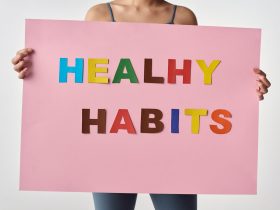Hello there, fellow ethical spenders and conscious consumers! I’m Nancy Green, and for the past four years, I’ve been on a mission to unravel the mysteries of responsible spending and sustainable living. Through my blog, I’ve explored the ins and outs of ethical consumption, and today, I’m diving deep into the fascinating interlink between these two essential aspects of modern life. So, grab your favorite eco-friendly beverage and join me on this journey as we discover how our wallets can shape a more sustainable future.
The Power of Your Wallet
Before we get into the nitty-gritty details, let’s address the elephant in the room. Why should we care about responsible spending and sustainable living? Well, my dear readers, your wallet holds immense power. Where you choose to spend your hard-earned cash can either contribute to environmental degradation, social injustices, and labor exploitation, or it can fuel positive change and promote sustainable practices. In other words, your money talks, and it speaks volumes about your values.
Understanding Responsible Spending
Responsible spending goes beyond the simple act of buying. It involves making conscious choices that align with your values and promote ethical practices. Here are some key aspects of responsible spending:
Mindful Consumption: Think before you buy. Do you really need that new gadget, or are you just succumbing to consumerism? Responsible spenders evaluate their purchases and opt for quality over quantity.
Supporting Ethical Brands: Seek out businesses that prioritize social and environmental responsibility. These companies often go the extra mile to ensure fair labor practices, reduce waste, and minimize their carbon footprint.
Local and Small Businesses: Support your local economy by shopping at small businesses. This not only boosts your community but also reduces the environmental impact of long-distance shipping.
Minimalism: Embrace the beauty of simplicity. Minimalism is not just a lifestyle trend; it’s a philosophy that encourages us to declutter our lives and focus on what truly matters.
Sustainable Living: More Than Just Recycling
Now, let’s talk about sustainable living. It’s more than just recycling, although recycling is essential. Sustainable living encompasses a holistic approach to reducing our ecological footprint. Here are some key elements:
Reducing Waste: This means not just recyc

ling but also reducing your consumption of single-use items and opting for products with minimal packaging.
Energy Efficiency: Making your home more energy-efficient by using LED lighting, improving insulation, and investing in renewable energy sources like solar panels.
Sustainable Transportation: Choosing eco-friendly modes of transportation, such as biking, walking, carpooling, or driving fuel-efficient vehicles.
Mindful Eating: Adopting a plant-based diet or reducing meat consumption to decrease the environmental impact of food production.
The Beautiful Intersection
Now that we’ve laid the groundwork let’s explore the magical intersection between responsible spending and sustainable living.
Quality Over Quantity: Investing in high-quality, sustainable products may cost a bit more upfront, but it often saves you money in the long run. For instance, buying a durable, eco-friendly water bottle eliminates the need for single-use plastic bottles, saving you money and reducing plastic waste.
Supporting Ethical Brands: Responsible spending often involves choosing products from companies that prioritize sustainability. These businesses are more likely to use eco-friendly materials, reduce waste, and support ethical labor practices.
Local and Small Businesses: By supporting local and small businesses, you not only bolster your community but also reduce the environmental impact of long-distance shipping. Plus, these businesses often have a more direct connection with their supply chains, making it easier to ensure sustainability.
Minimalism: Sustainable living and minimalism go hand in hand. By adopting a minimalist lifestyle, you reduce your consumption and, in turn, your ecological footprint. This approach encourages you to appreciate what you have rather than constantly seeking more.
Real-World Examples
Let’s dive into some real-world examples of how responsible spending and sustainable living intersect:
Clothing: Instead of buying fast fashion items that contribute to textile waste and exploit cheap labor, responsible spenders invest in sustainable, ethically-made clothing. This not only supports fair labor practices but also reduces the need for constant replacement, ultimately saving money.

Home Energy: Sustainable living involves energy-efficient choices like switching to LED bulbs and improving insulation. While these investments may initially cost more, they significantly reduce your energy bills in the long term, benefiting both your wallet and the environment.
Groceries: When you opt for locally-sourced, organic foods, you support sustainable agriculture practices and reduce the carbon footprint associated with long-distance food transportation. Plus, you often get fresher, healthier products, which can lead to savings on healthcare in the long run.
Transportation: Choosing public transportation, carpooling, or biking not only reduces your carbon footprint but also saves you money on gas, maintenance, and parking fees. Responsible spending meets sustainable living on the road.
The Bottom Line
In the grand tapestry of life, responsible spending and sustainable living are threads that intertwine beautifully. By making conscious choices about where and how we spend our money, we can lead more meaningful lives that align with our values while contributing to a more sustainable and equitable world.
So, my fellow ethical spenders, let’s continue this journey together. As we embrace responsible spending and sustainable living, we’ll not only lighten our environmental footprint but also find fulfillment in knowing that our choices make a positive difference. It’s a win-win for us, our wallets, and the planet we call home.

































